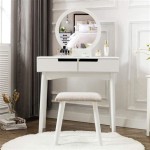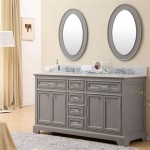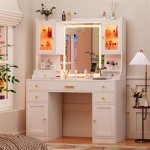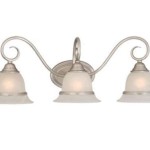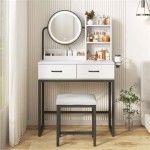60 Inch Single Bathroom Vanities: A Comprehensive Guide
The 60-inch single bathroom vanity represents a significant upgrade in terms of both storage and aesthetics for many bathrooms. This size offers a substantial amount of counter space and cabinet volume, making it ideal for larger bathrooms or those shared by multiple users. When selecting a 60-inch single bathroom vanity, there are numerous factors to consider, ranging from the style and materials to the functionality and installation requirements. This article will delve into these aspects to provide a comprehensive understanding of these popular bathroom fixtures.
Before diving into the specifics, it's crucial to understand the typical dimensions of a 60-inch single vanity. While the term "60 inch" refers to the approximate width, the depth and height can vary depending on the design and manufacturer. Most vanities will be around 21 to 24 inches deep and 30 to 36 inches high. These standard dimensions allow for comfortable use and compatibility with common plumbing configurations. However, variations exist, so careful measurement of the available space is essential before making a purchase.
Key Point 1: Material Selection and Durability
The materials used in the construction of a 60-inch single bathroom vanity significantly impact its durability, appearance, and maintenance requirements. The cabinet itself is commonly constructed from one of several materials, each with its own advantages and disadvantages. Solid wood, plywood, MDF (Medium-Density Fiberboard), and particleboard are the most frequent choices. Countertop materials are equally diverse, including natural stone (granite, marble, quartz), engineered stone (quartz composites), solid surface materials, laminate, and even concrete.
Cabinet Materials:
Solid Wood: Solid wood offers the highest level of durability and aesthetic appeal. It can withstand moisture relatively well if properly sealed and can be refinished if damaged. However, solid wood is the most expensive option and can be prone to warping or cracking in extremely humid environments. Hardwoods like oak, maple, and cherry are commonly used for their strength and beauty.
Plywood: Plywood is an engineered wood product made by layering thin sheets of wood veneer and bonding them together with adhesive. It is significantly more resistant to warping and cracking than solid wood and offers good structural integrity. High-quality plywood, especially marine-grade plywood, can withstand moisture effectively, making it a suitable choice for bathroom vanities. Plywood is generally more affordable than solid wood but more expensive than MDF or particleboard.
MDF (Medium-Density Fiberboard): MDF is another engineered wood product made by breaking down hardwood or softwood residuals into wood fibers, often in a defibrator, combining it with wax and a resin binder, and forming panels by applying high temperature and pressure. MDF is dense and uniform, making it ideal for painting and creating smooth surfaces. However, it is less resistant to moisture than solid wood or plywood and can swell or disintegrate if exposed to water for extended periods. MDF is a cost-effective option for vanity cabinets, particularly those with painted finishes.
Particleboard: Particleboard is the least expensive option for vanity cabinets. It is made from wood chips and sawdust bonded together with adhesive. Particleboard is lightweight and easy to work with, but it is also the least durable and most susceptible to moisture damage. It is typically covered with a veneer or laminate to improve its appearance and water resistance. Due to its limitations, particleboard is generally not recommended for high-use bathrooms or those prone to dampness.
Countertop Materials:
Granite: Granite is a natural stone known for its durability, heat resistance, and unique patterns. It is a popular choice for bathroom vanities due to its stain resistance when properly sealed. However, granite is porous and requires regular sealing to prevent staining. It is also a relatively heavy material, which may require additional support for the vanity cabinet.
Marble: Marble is another natural stone prized for its elegance and veining patterns. It is softer than granite and more prone to scratching and staining. Marble requires more frequent sealing and careful maintenance to preserve its appearance. It is often used in high-end bathrooms for its luxurious aesthetic.
Quartz: Quartz, also known as engineered stone, is a composite material made from crushed quartz crystals and resin. It offers the look of natural stone with improved durability and stain resistance. Quartz is non-porous and does not require sealing. It is available in a wide range of colors and patterns, making it a versatile choice for bathroom vanities. Quartz is typically less expensive than granite or marble.
Solid Surface Materials: Solid surface materials, such as Corian, are acrylic-based materials that are non-porous and seamless. They are highly resistant to stains and scratches and can be easily repaired if damaged. Solid surface materials are available in a variety of colors and patterns and can be molded into custom shapes. They are a mid-range option in terms of price and durability.
Laminate: Laminate countertops consist of a thin layer of decorative paper bonded to a particleboard or MDF core. They are the most affordable countertop option and are available in a wide range of colors and patterns. Laminate countertops are relatively durable and easy to clean, but they are susceptible to scratching and water damage. They are a good option for budget-conscious homeowners but may not offer the same longevity as other materials.
Key Point 2: Style and Design Considerations
The style and design of a 60-inch single bathroom vanity should complement the overall aesthetic of the bathroom. The available styles are diverse, ranging from traditional and transitional to modern and contemporary. The choice of style depends on personal preferences and the existing décor of the bathroom.
Traditional Vanities: Traditional vanities often feature intricate details, such as raised panel doors, carved accents, and ornate hardware. They are typically made from solid wood or wood veneers and finished with rich, dark stains. Traditional vanities evoke a sense of elegance and timelessness.
Transitional Vanities: Transitional vanities blend elements of traditional and modern styles. They often feature cleaner lines than traditional vanities but still incorporate some decorative details. Transitional vanities are versatile and can work well in a variety of bathroom settings.
Modern Vanities: Modern vanities emphasize clean lines, minimalist designs, and sleek surfaces. They often feature flat-panel doors, integrated sinks, and minimalist hardware. Modern vanities are typically made from MDF or plywood and finished with high-gloss paint or laminate. They create a contemporary and uncluttered look.
Contemporary Vanities: Contemporary vanities are similar to modern vanities but may incorporate more unconventional materials and designs. They may feature floating designs, asymmetrical shapes, and bold colors. Contemporary vanities are ideal for creating a statement in the bathroom.
Beyond the overall style, the design of the vanity also includes the configuration of cabinets and drawers. The ideal configuration depends on the storage needs of the user. Some vanities feature a combination of drawers and cabinets, while others may have open shelving or a combination of all three. Drawers are useful for storing smaller items, such as toiletries and makeup, while cabinets are better suited for larger items, such as towels and cleaning supplies. Open shelving can provide easy access to frequently used items.
The type of sink is another important design consideration. 60-inch single bathroom vanities can accommodate a variety of sink styles, including undermount sinks, drop-in sinks, vessel sinks, and integrated sinks. Undermount sinks are installed beneath the countertop, creating a seamless and easy-to-clean surface. Drop-in sinks are installed on top of the countertop and have a visible rim. Vessel sinks sit on top of the countertop like a bowl. Integrated sinks are molded directly into the countertop, creating a seamless and hygienic surface.
Key Point 3: Installation and Plumbing Requirements
The installation of a 60-inch single bathroom vanity requires careful planning and execution. It is essential to ensure that the vanity fits properly within the available space and that the plumbing connections are compatible. While some homeowners may choose to install the vanity themselves, professional installation is recommended to ensure that the job is done correctly and to avoid potential plumbing issues.
Before beginning the installation, it is important to shut off the water supply to the bathroom and disconnect the existing plumbing fixtures. The old vanity should be removed carefully, and the area should be cleaned thoroughly. The new vanity should be positioned in place, and its level should be checked. Shims may be necessary to level the vanity if the floor is uneven.
Next, the plumbing connections should be made. This includes connecting the water supply lines to the faucet and the drainpipe to the sink drain. It is important to use Teflon tape or pipe sealant to ensure a watertight seal. The drainpipe should be properly vented to prevent sewer gases from entering the bathroom.
If the vanity includes electrical components, such as lighting or outlets, it is important to connect them to the electrical system according to local codes and regulations. A licensed electrician should be consulted if there is any doubt about the electrical work.
Once the plumbing and electrical connections are complete, the countertop and sink can be installed. The countertop should be securely attached to the vanity cabinet using adhesive or screws. The sink should be installed according to the manufacturer's instructions. Finally, the hardware, such as knobs and pulls, should be installed.
Plumbing considerations play a significant role in vanity selection. Existing plumbing location directly impacts the type of vanity that will work. Moving plumbing is an option but adds to the overall project cost. If the existing plumbing configuration doesn't readily align with the desired vanity, adjustments may be necessary to ensure proper drainage and water supply connections. This can involve relocating drainpipes, extending water lines, or even modifying the wall structure to accommodate the new plumbing.
Accessibility considerations are also important. The height of the vanity should be appropriate for the user. If someone in the household has mobility issues, a lower vanity may be necessary. Grab bars can also be installed near the vanity to provide additional support. The sink should be positioned so that it is easily accessible for users with wheelchairs or other mobility aids.
Proper ventilation is crucial to prevent moisture buildup and mold growth in the bathroom. A bathroom fan should be installed to remove excess moisture after showering or bathing. The fan should be vented to the outside of the house to prevent moisture from re-entering the bathroom. Regular cleaning and maintenance of the vanity and surrounding area are also essential to prevent moisture damage.
In conclusion, selecting and installing a 60-inch single bathroom vanity involves careful consideration of various factors, including material selection, style, design, installation requirements, and plumbing considerations. By understanding these aspects, homeowners can choose a vanity that meets their needs and enhances the functionality and aesthetics of their bathroom. While the process can be complex, the benefits of a well-chosen and properly installed 60-inch single bathroom vanity are significant, providing ample storage, counter space, and a stylish focal point for the bathroom.

Altair Design Cerrito 60 Single Wood Vanity In Brown Brushed Oak Engineered Stone Top Nm

60 Inch Bathroom Vanity Single Sink Limitless Woodworking

Vanity Art 60 Single Sink Bathroom With Top Backsplash Vintage Green

60 Chicago Whitewashed Walnut Single Sink Bathroom Vanity

Spa Bathe Henley 60 In White Undermount Single Sink Bathroom Vanity With Gray Specks Quartz Top Hu60wh

Ariel Hepburn 60 Single Rectangle Sink Vanity Carrara Quartz White Bathroom Vanities

Brookfield 60

James In Vanities Brittany 60 Single Vanity Saddle Brown 3 Cm Eternal Marfil Quartz Top

60 Inch Antique Single Sink Bathroom Vanity Whitewashed Walnut Finish

60 Inch White Single Sink Bathroom Vanity With Calacatta Quartz Top


